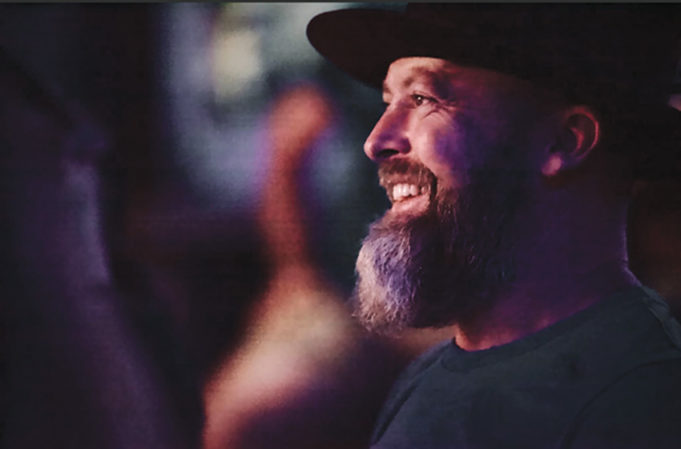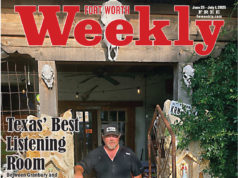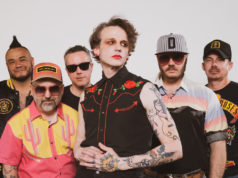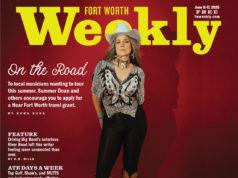Sean Russell feels the local music scene is “in a bit of a crisis.” Attendance at most of the shows he’s been to recently, said the roots rocker in a Facebook post, has “sucked.”
The man comes from a place of intimate knowledge — and love. He not only plays a ton of local and regional stages as frontman for Cut Throat Finches and in his newish, Beatleseque outfit The Nancys, but he probably goes to more local shows than anyone else in town. He’s out so much because he loves it and because he truly cares.
Maybe he’s also a bit of a nostalgist.
“I used to see a real community of musicians supporting each other at shows,” he writes, “and I saw people pushing and promoting each other’s work in different ways. That seems to have disappeared. If we musicians don’t care, why would anybody else?”
Russell, I must say, has touched upon a subject I think about often. Both of us have been active in local music for over 20 years, both as participants and observers, and in those two decades, it seems to me that Fort Worth music’s cultural cache comes in waves. We’ve both been around long enough to watch the crests and trough, and there was indeed a pretty big wave in the mid-2010s that made this city’s music scene feel relevant, vibrant, and exciting, a thing to point to in the endless Fort Worth-vs.-Dallas debate. It was a tite time. Not to be that guy, but if you’re in your 20s or younger and interested in local music, you really missed it. If you’re around the same age as Sean and me, well, you probably just miss it.
I certainly do. Not every part of it — racing around town all week with your gear in the back of your car to play gigs in multiple bands is way easier before your late 30s roll around, and there is no way that I, a tired and tiresome man in his middle 40s, could hang with my younger self’s tolerance for daily/nightly alcohol consumption. But, yeah, I do miss the days when you’d go to a bar on any given night and see all your pals who also have alcohol problems and thousands of dollars of gear in the backs of their vehicles. You couldn’t eat a hamburger without hearing someone in the midst of a three-hour acoustic gig. And people loved watching bands. Sure, that era was full of musicians watching their fellow musicians, but half of those crowds were fans, people who’d pay a cover to watch their friends get shitfaced and still rock onstage. Back then felt like a constant party because it kind of was. It was fun. Carefree even.
But so many things are different now that it’s really hard to make a unified theory to explain what Russell is talking about. When I think about my own experience playing in and writing about local bands, I put this heyday of a community of musicians that Russell alludes to as existing from around 2009 to, like, 2017 or ’18, and it’s inarguable that this city’s cultural landscape, both metaphorically and literally, is unrecognizable in a lot of lamentable ways. That groundswell started during the Obama administration, for goodness’ sake! We were coming out of a recession! Trump was still just a reality TV character, and the idea of a pandemic was the stuff of movies. For the generation of local bands of yore, we were all, like, 32 plus-or-minus 5 years, ourselves the continuity between the early-aughts lore of the Wreck Room, the Aardvark, and the Moon and all the new bands that came up in the late 2000s — the Quaker City Nighthawks, Hanna Barbarians, Stella Rose, Whiskey Folk Ramblers, the earliest iterations of Dead Vinyl, your band that I am unfairly forgetting, and others. Most of those outfits got their starts playing clubs that no longer exist.
But also back then, there were two places where young bands could more easily land a gig: The Where House and 1919 Hemphill, two DIY venues that, at a sub-mainstream level, really fueled the general public’s enthusiasm for local music. Shows at both spots had an element of danger to them, the excitement that comes from a situation where the cops might show up for 10 different reasons.
These days, we are long past those 2009-2016 ages. The Where House and 1919 are both long gone, and I don’t know where a band of under-21s can play without having a pastor bother people between sets. Replicating those places and the spirit they engendered is just not possible, not in the same way, anyway, and not by the same people.
Russell kind of touches on a problem in which the community of musicians, once busy and social and out all the time, is none of that, and the first thing I notice is that that community is just older now, and without younger musicians and their new bands filling in the empty spots, well, that’s why I think shows don’t have the attendance they once did.
Music scenes, no matter where or when, need twentysomethings. That’s just how it goes. And when I wonder why local music may or may not pique the interest of someone in that demographic, I have to consider that 21-year-olds never have any money — not now, not ever, and not unless they’re the kind who are interviewed in New York magazine because they live in New York City.
In his post, Russell pivots to the inflated cost of seeing a band, and I agree that a lot of people of any bar-going age, musicians or not, might stay home instead of paying a $20 cover charge. He points out that many venues pay their sound tech and other staff out of the cover before any of the bands make any money and then says something that raises my eyebrows a little bit.
“Musicians are so broke,” he writes, “they sure as hell can’t afford that fee, and, unfortunately, the clubs musicians play at do not necessarily work out deals for us at the door the way they used to and let us in free. The bars in Fort Worth have failed to adopt a plan that would allow customers to come in the door and then add $10 to their tab — like a mandatory gratuity if the customer is at the club during the hours the band is playing. WOULD YOU SUPPORT THAT? What should we do?”
Man, I don’t know. That sounds like a problem for individual bars to solve, and if one bar has a form of paying performers that you prefer over the others, then that’s the one you should play. And now that I think about it, there’s still a number of bands and artists around town who draw pretty well despite whatever state of flux the music scene currently inhabits. I know Jacob Furr’s album release last month at The Post was sold out, and I was part of a full house watching Broke String Burnett at the same venue when he dropped his new album back in March. Same for the Flickerstick show I saw at Tulips FTW over Labor Day weekend. Ozone packed that place, too, and actually, there was a pretty sizable turnout for a song swap by Christian Carvajal, Jacob Robertson, and Wayne Floyd at The Cicada last Thursday. Packed shows happen, just not with regularity of a decade ago. Perhaps putting a button on a register for “band cover” might help but only if the crowds want to come out in the first place.












